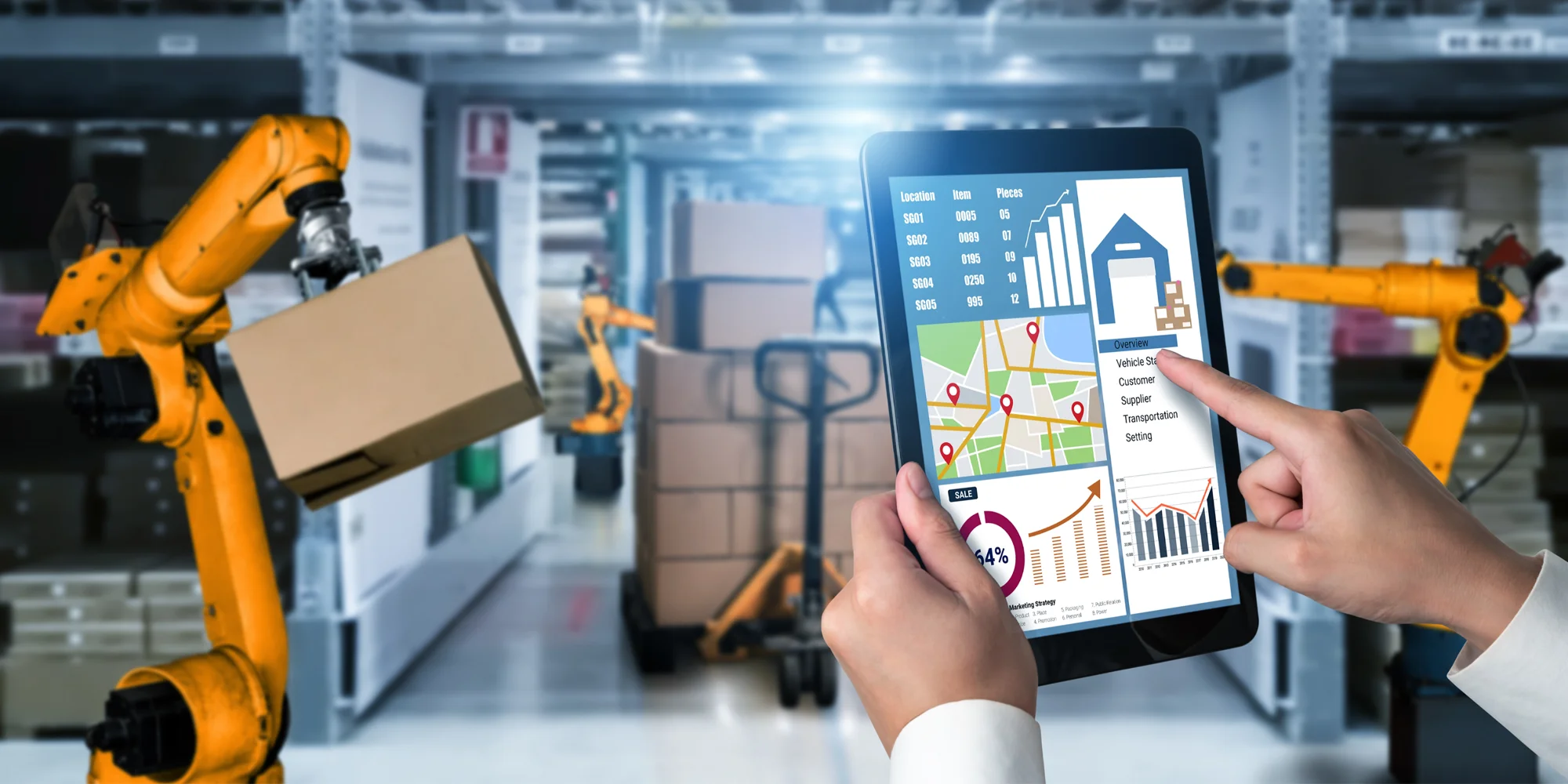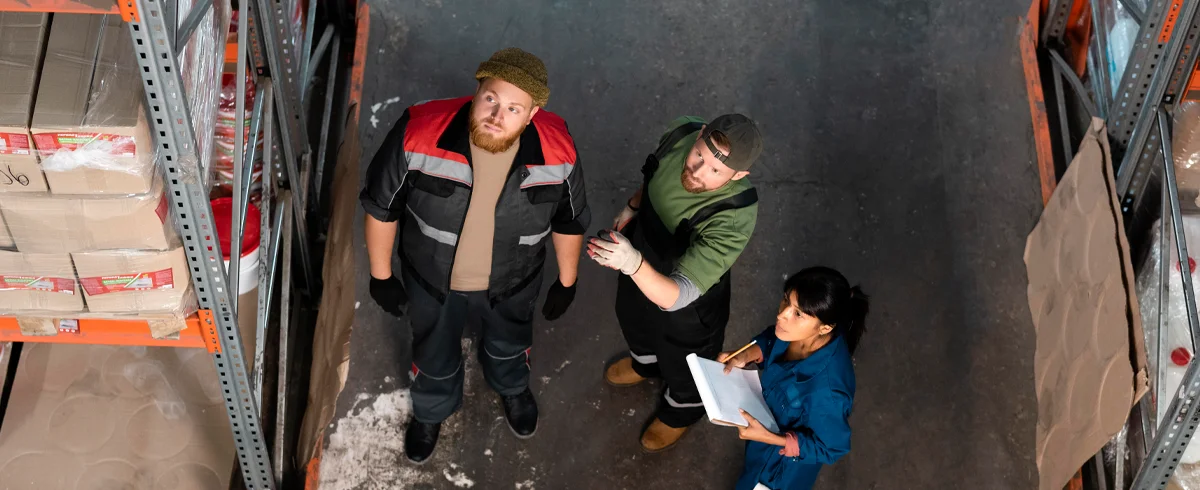Necessary Always Active
Necessary cookies are required to enable the basic features of this site, such as providing secure log-in or adjusting your consent preferences. These cookies do not store any personally identifiable data.
|
||||||
|
||||||
|
||||||
|

Have you ever wondered how your online orders seem to magically show up exactly when you expect them? Or how stores always have just what you need when you need it?
That’s the Internet of Things (IoT) in supply chain operations. IoT connects physical devices like robots, sensors, and trackers to the Internet, providing massive amounts of data to businesses in real-time. Businesses then use that data to increase supply chain efficiency and make quick decisions.
But while IoT is indeed revolutionizing the way supply chain management companies operate behind the scenes, it’s not without its challenges.
In this article, we’ll explore powerful ways this game-changing technology is shaping supply chain operations and address the challenges you might face in its implementation.
IoT is reshaping supply chain operations in the following ways:

With IoT, businesses and their customers can see what’s happening with products in real time. For instance, thanks to the benefits of IoT, e-commerce businesses like Amazon can provide precise delivery updates.
Tiny sensors, RFID tags, and GPS trackers attached to shipments send live updates about their location, temperature, or humidity. This means businesses know exactly where their products are and can adjust delivery routes to avoid delays. With this real-time tracking, businesses can:
This kind of real-time tracking is crucial in industries like food and medicine, where keeping things fresh and on time is critical.
Remember when someone had to manually count items in a warehouse to see what was in stock? Implementing IoT in supply chain has changed all that.
In many warehouses today, robots do tasks humans used to handle, like checking inventory, tracking products, or processing orders. With IoT, these robots can work even faster and more accurately, thus:
More so, smart warehouses now have sensors that automatically track how much inventory is on hand and notify the system when levels are low. It’s like having an invisible helper who ensures the business never runs out of key products or over-orders.
But IoT in supply chain doesn’t just stop at tracking stock. It also helps businesses predict what they’ll need in the future by analyzing past sales and current trends. For example, if a particular product always sells out in December, the system will suggest stocking up before the holiday rush.
IoT also helps businesses keep their equipment running smoothly by predicting when something might break down. Sensors on machines track things like temperature, pressure, and vibrations, and if anything seems off, the system can alert managers before the machine fails.
To simplify, imagine if your fleet of delivery vehicles could send you a reminder that it needs an oil change before you start hearing that dreaded knocking sound.
By scheduling maintenance ahead of time, companies avoid costly breakdowns and keep operations running smoothly.
Keeping products at the right temperature during transport is essential in food, pharmaceuticals, or chemical industries. IoT sensors in cold chain management systems monitor temperature and other environmental factors in real time. If something goes wrong, say, the temperature starts to rise, the system alerts you to act immediately.
This keeps sensitive products like vaccines or fresh produce in perfect condition from when they leave the factory to when they reach the customer.
In this way, using IoT in supply chain operations helps you deliver high-quality, safe products while avoiding spoilage or damage.
IoT takes the guesswork out of risk management. With devices gathering real-time data on everything from equipment conditions to environmental changes, businesses can spot potential problems early. For example
IoT doesn’t just make businesses more efficient—it also helps them become more environmentally friendly. By optimizing delivery routes, companies can cut down on fuel consumption and reduce their carbon footprint. IoT sensors in trucks can track fuel efficiency and highlight areas where you can save energy.
In addition, smarter inventory management means less waste. For example, in the food industry, IoT sensors monitor conditions that prevent spoilage, helping reduce food waste.

In a world where customers want instant updates, IoT makes it easier for businesses to deliver. Companies can update customers from order placement to delivery by offering real-time tracking information. This kind of transparency helps build trust and improves the overall shopping experience.
E-commerce companies use this tech to keep customers informed, thus making shopping more convenient and reducing the chance of returns.
Related Blog – What is Artificial Intelligence IT operations(AIOps)? How is it Changing the IT Field?
While IoT has many benefits, bringing Iot it into your supply chain isn’t all that easy. There are a few hurdles to know about before you can fully enjoy all the benefits.
Here’s a closer look at the challenges of IoT implementation.
IoT devices generate a lot of data about your shipments, equipment, and inventory. While this data is super helpful, it also means more information that you need to protect. Cybercriminals love to find weak spots; if your IoT system isn’t secure, it could be a target.
To keep your information safe, you must invest in secure networks, encryption (scrambling your data so no one can read it), and robust data management. These three things build a digital fortress around your valuable information.
Without proper security, sensitive data could fall into the wrong hands, leading to big problems like theft or a full-on data breach.
Interoperability means getting things to work together. But sometimes, you’ll implement different IoT systems, and not all of them communicate well with each other. This can cause inefficiencies, delays, and a lot of frustration.
To avoid this, you need to ensure their IoT systems are compatible. This could mean spending extra time and money to integrate different systems or to find a solution that covers all your relevant areas.
Rolling out IoT tech across your entire supply chain isn’t cheap. The upfront cost can be steep, from buying new devices and sensors to upgrading your software. Then, there’s the cost of training your team to use the latest systems. Plus, you must spend on maintaining all the equipment.
The good news is that, over time, IoT pays for itself by boosting efficiency and cutting down on operational costs. But getting started can feel like a major investment, and that initial spending can be tough for your business.
With IoT, you’re suddenly dealing with a mountain of data. This can be overwhelming, especially if you don’t have the right systems to process and make sense of all that information.
Big data requires advanced analytics tools to sift through it and pull out the useful bits. Without these tools, you risk getting lost in a sea of numbers, which can slow down decision-making rather than speed it up.

Once your IoT system is up and running, you can’t just sit back and relax. Like any technology, IoT devices need regular maintenance to stay in good working order.
Just like you need to change the oil, check the tyres, and take your car in for tune-ups to keep it running smoothly, the same goes for IoT systems. Without proper upkeep, you risk downtime, which can disrupt your operations.
Starting with a small IoT setup might be manageable, but as your business grows and your needs expand, scaling the system can get tricky for the following reasons:
This is where planning becomes essential.
Before implementing IoT in supply chain operations, you need to think ahead and design your IoT systems to handle future growth so you don’t have to start from scratch later. In other words, build with extra space in mind.
Related Blog – Top 8 Operations Management Tools for 2024
There’s no doubt that the Internet of Things makes supply chains smarter, faster, and more efficient. It does so by offering real-time visibility, automating processes, and providing predictive insights, with positive results such as having the right products in stock, preventing equipment breakdowns, delivering real-time order updates, among others.
Although implementing IoT in supply operations has challenges, the benefits far outweigh the hurdles. IoT technology is constantly evolving, and rather than shy away from it because of implementation challenges, it’s high time to get on board and grow with the changes.
In the end, IoT isn’t just a tech trend. It’s the key to unlocking a more efficient and customer-focused supply chain and, hence, more business.
Sign up to receive our newsletter featuring the latest tech trends, in-depth articles, and exclusive insights. Stay ahead of the curve!